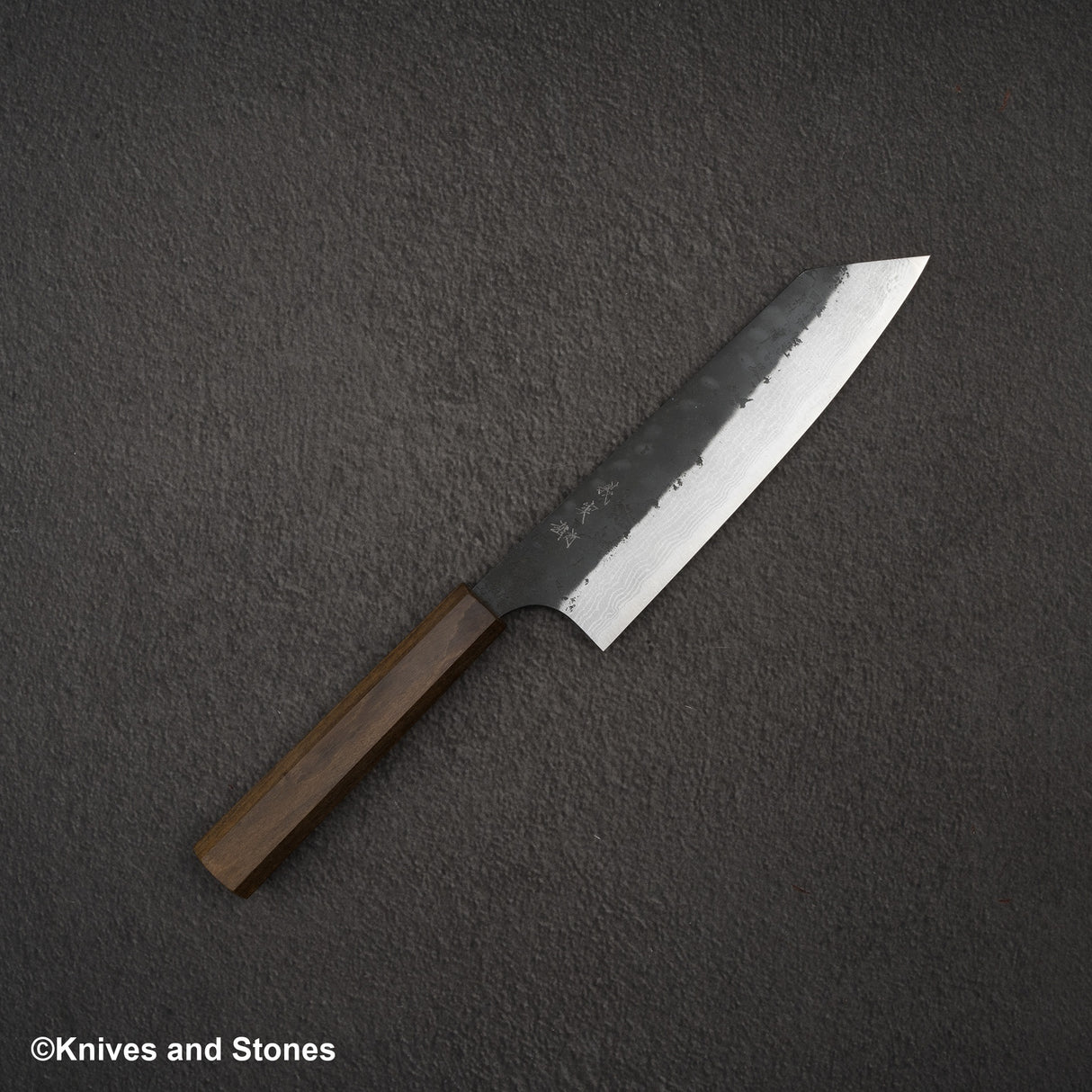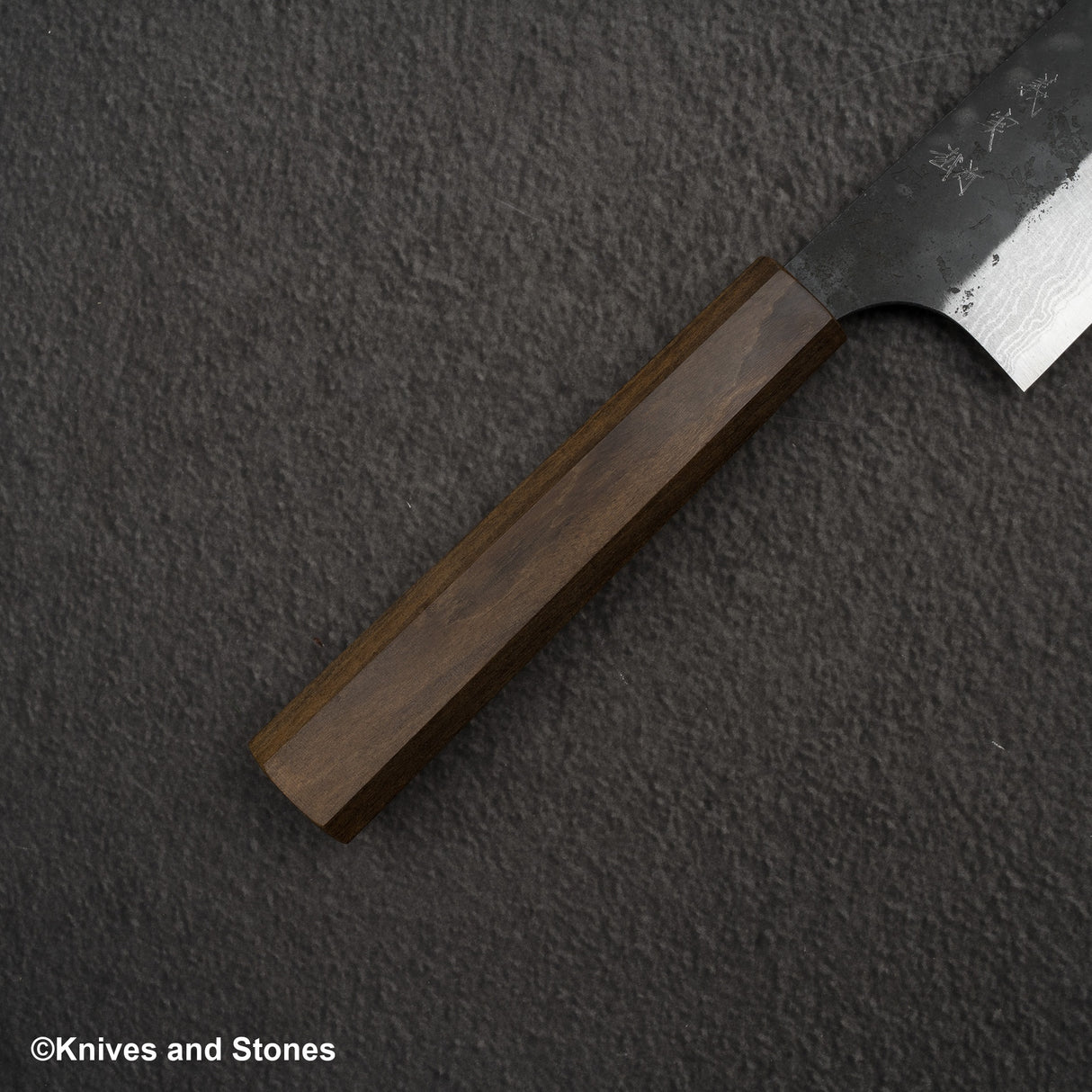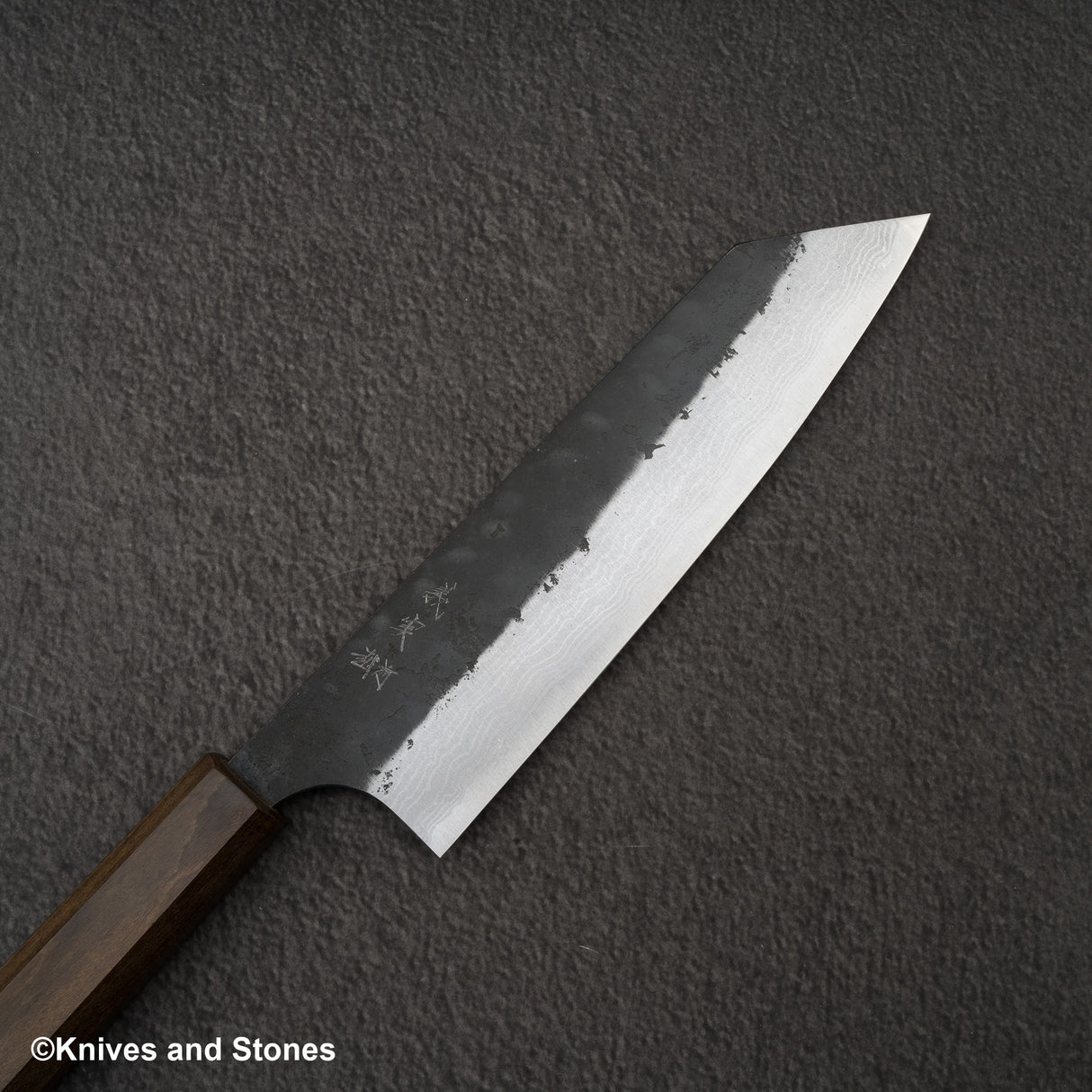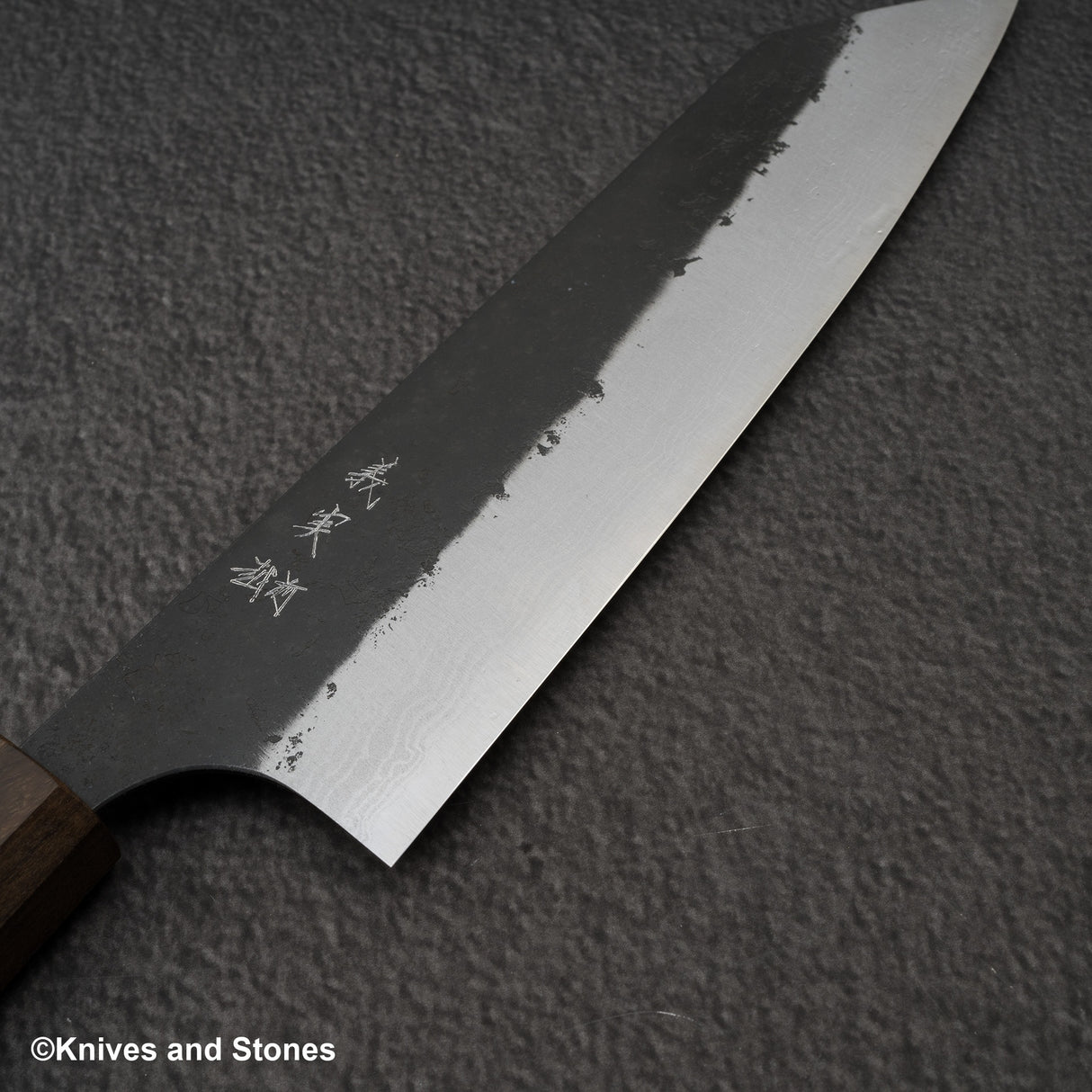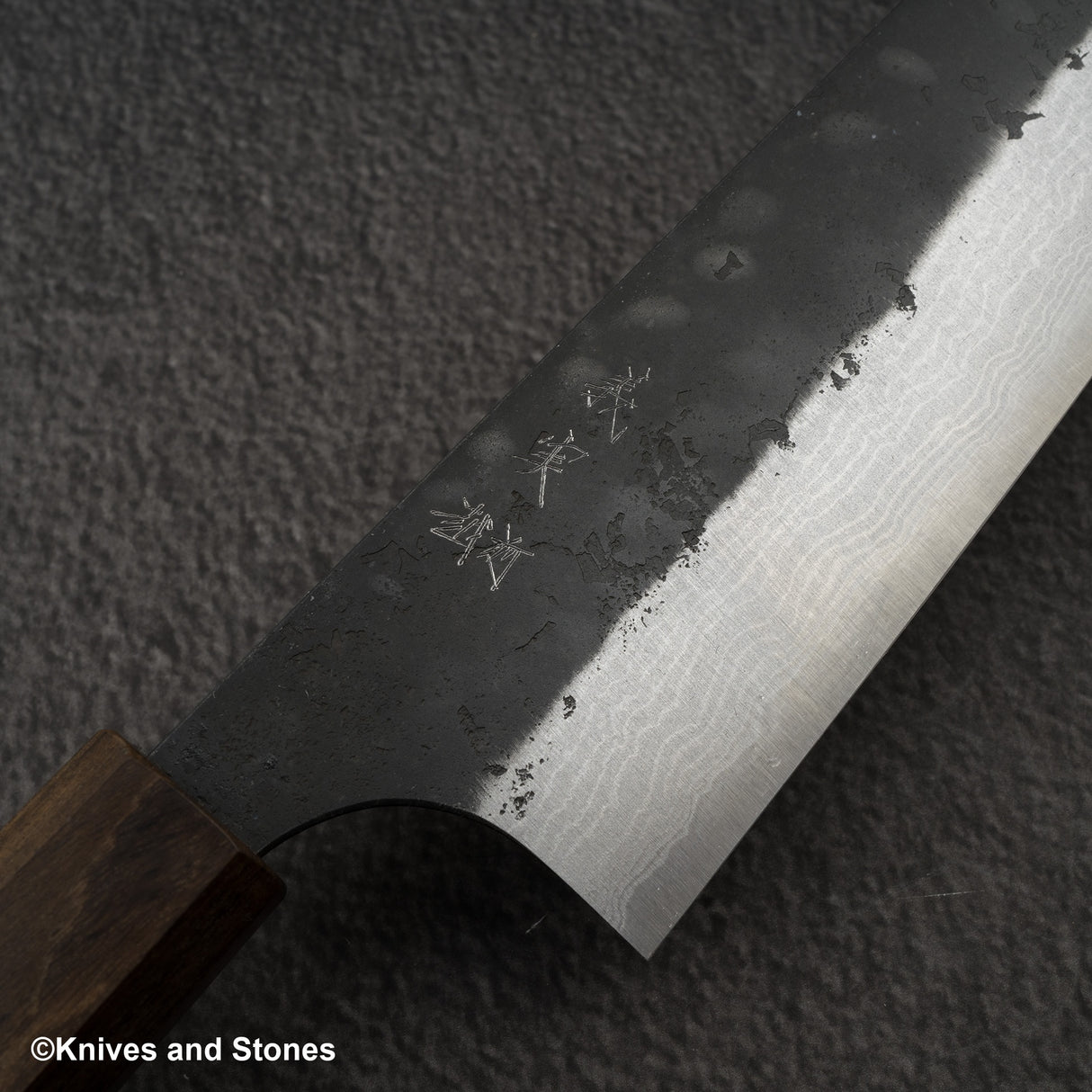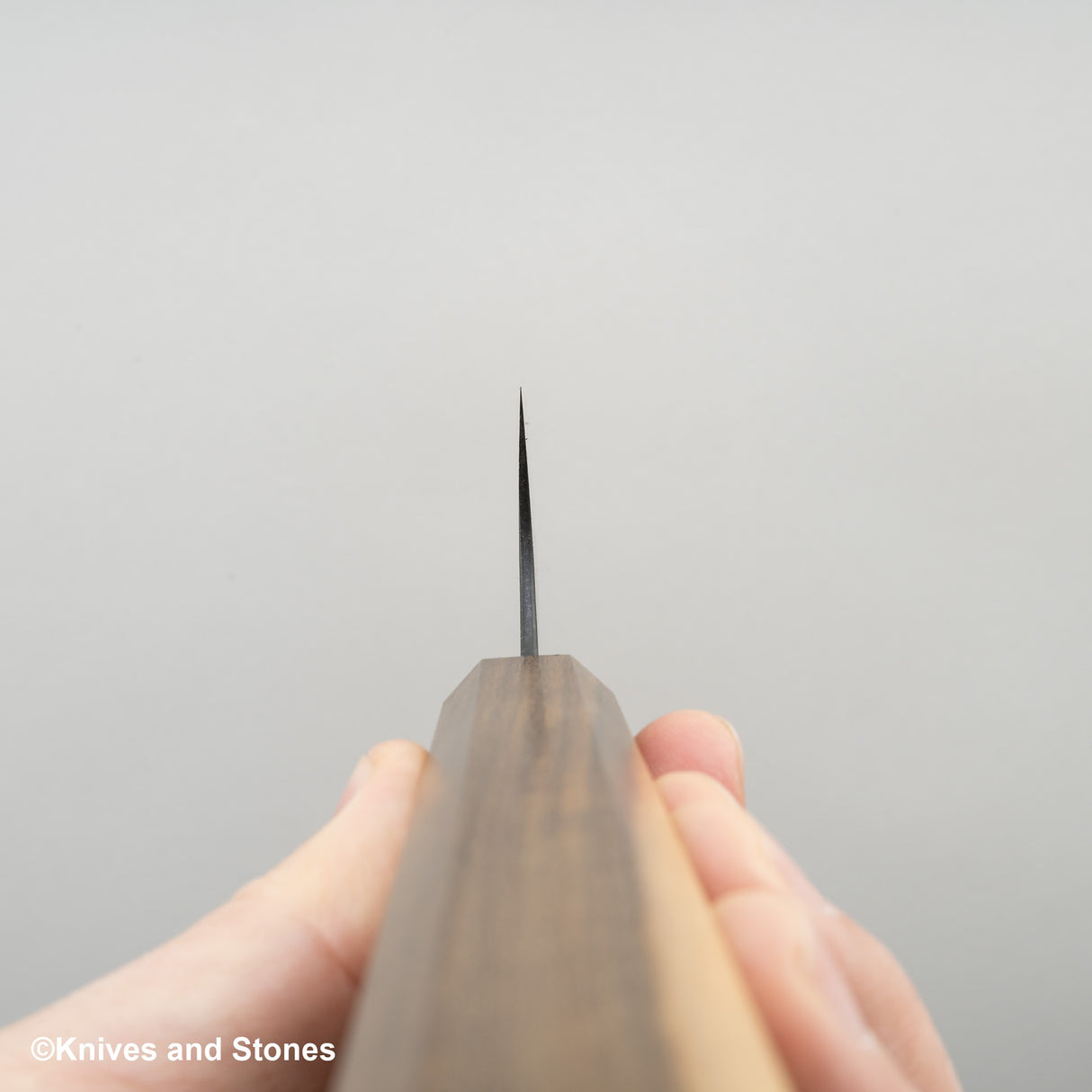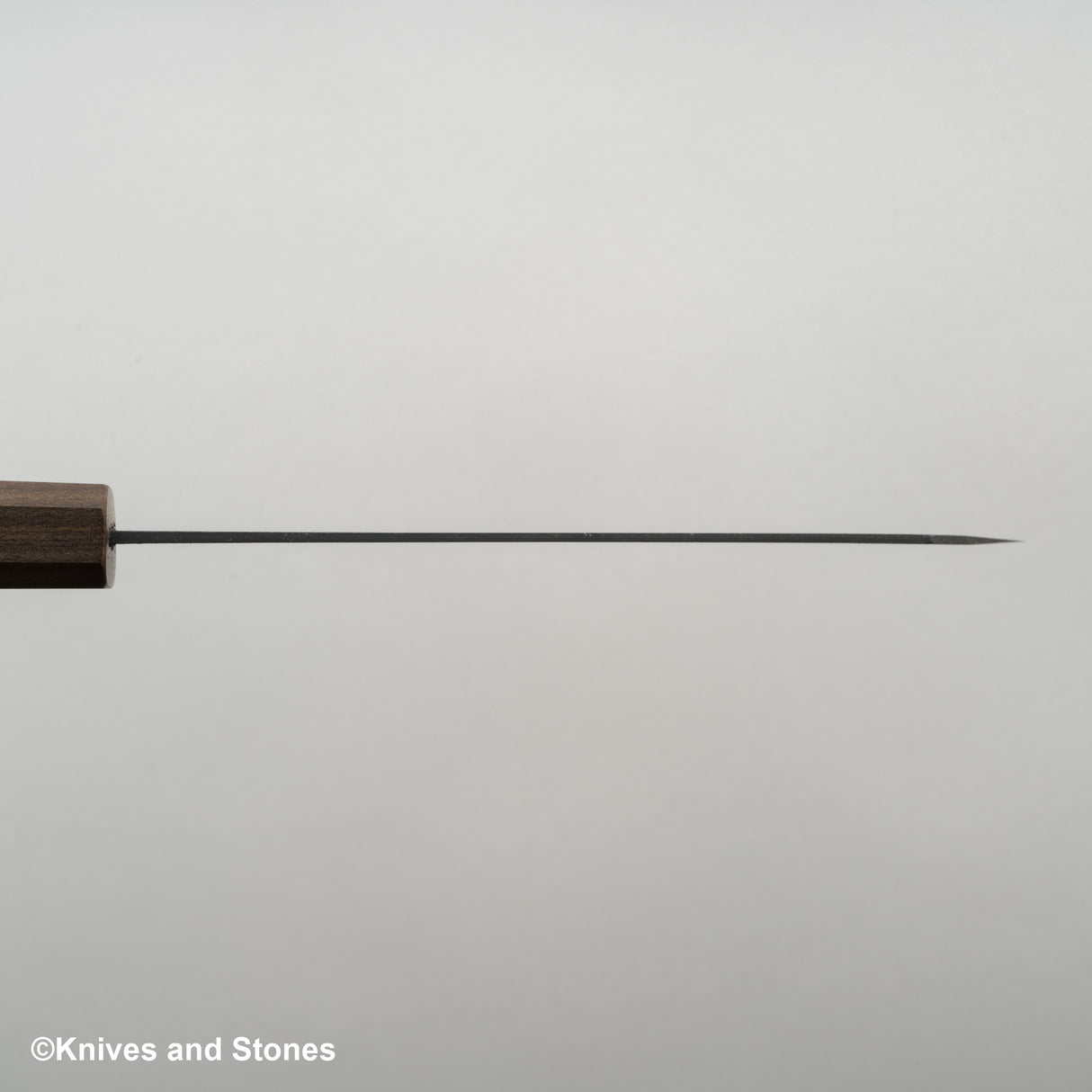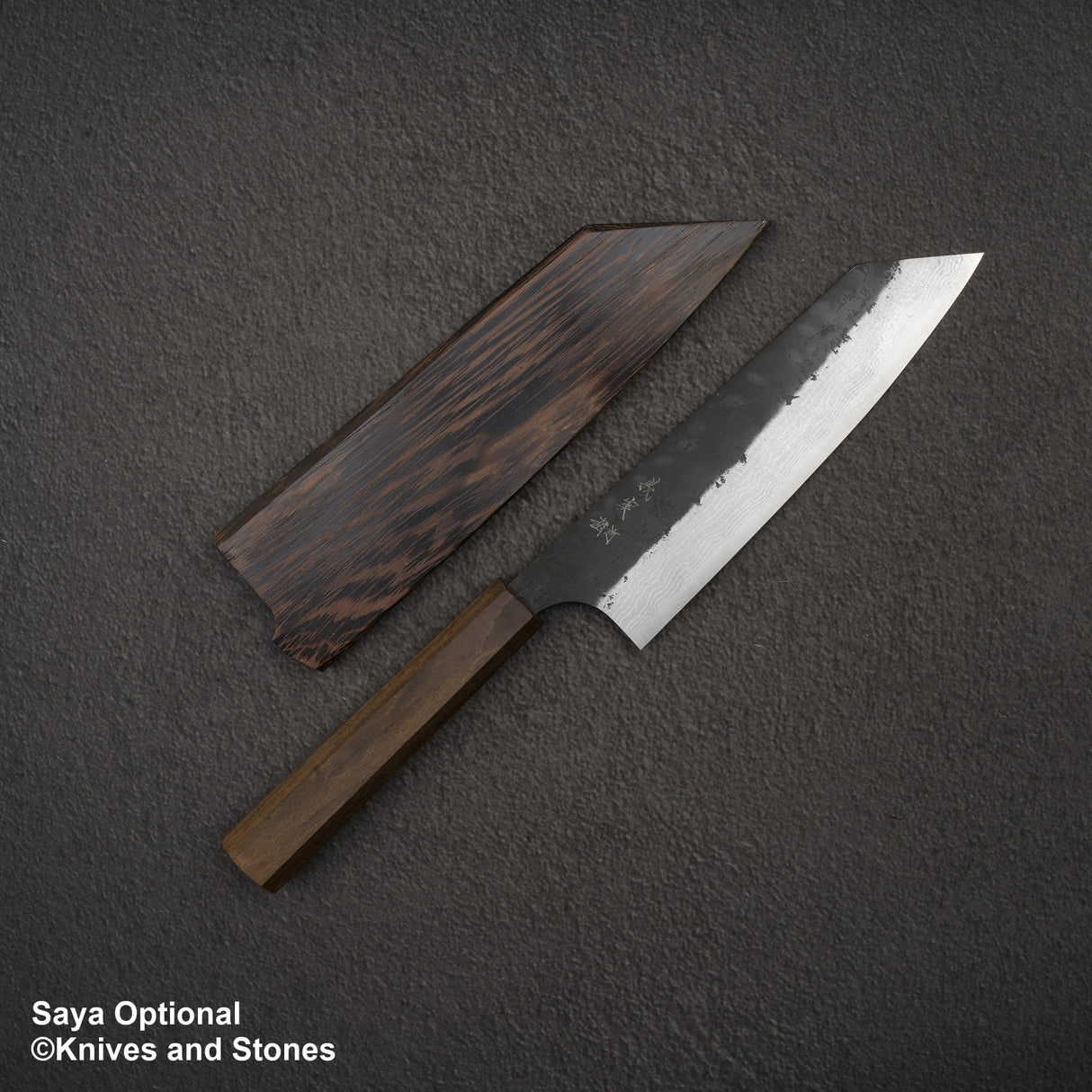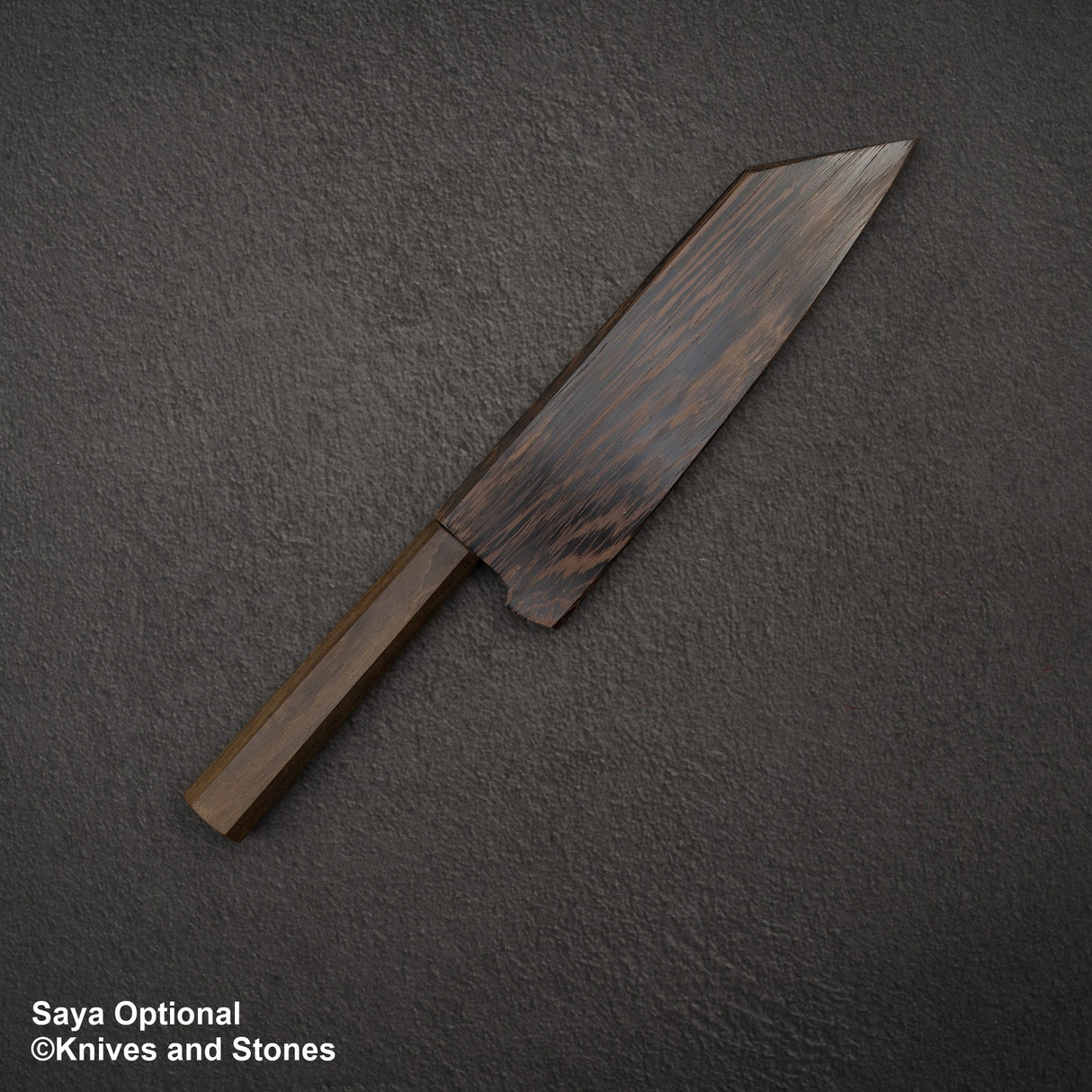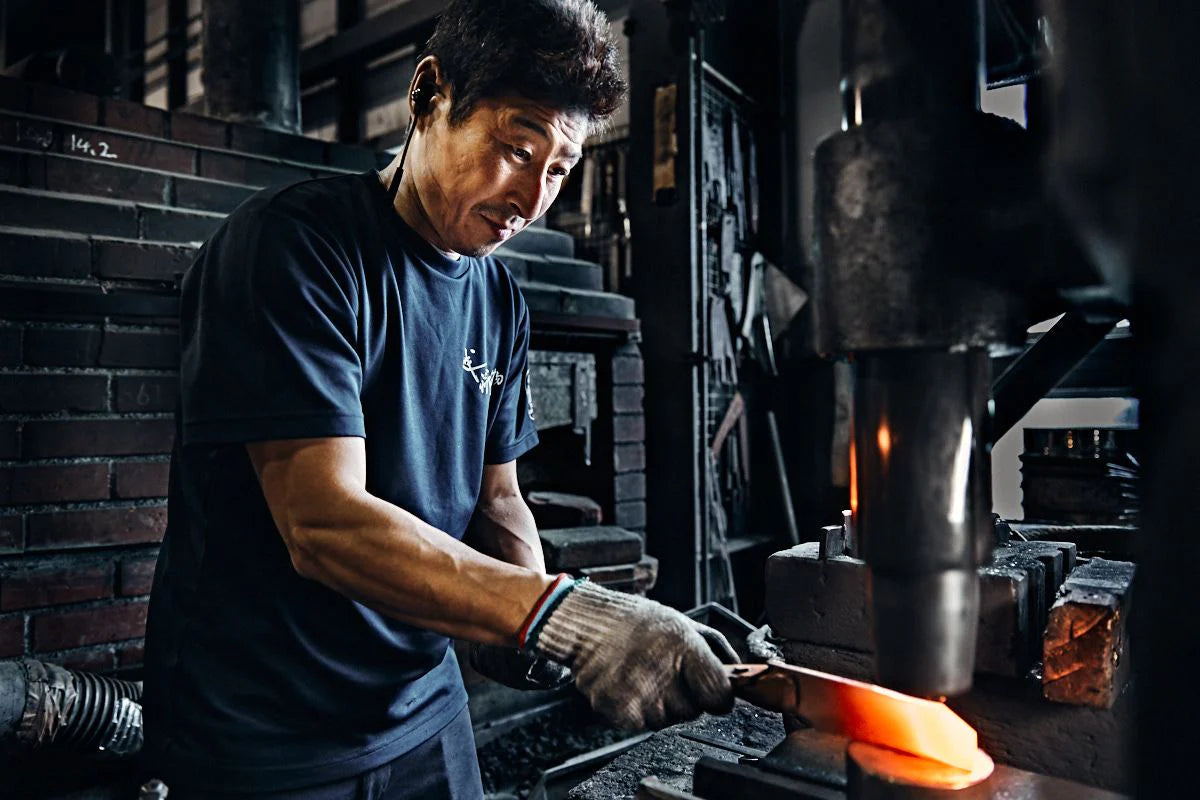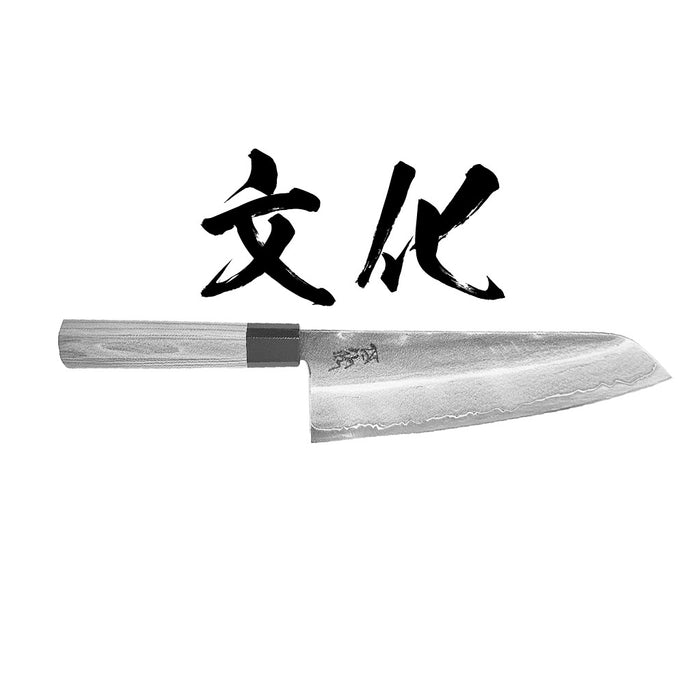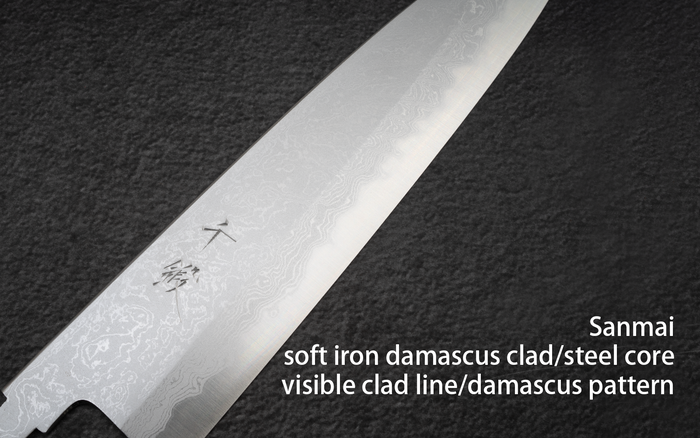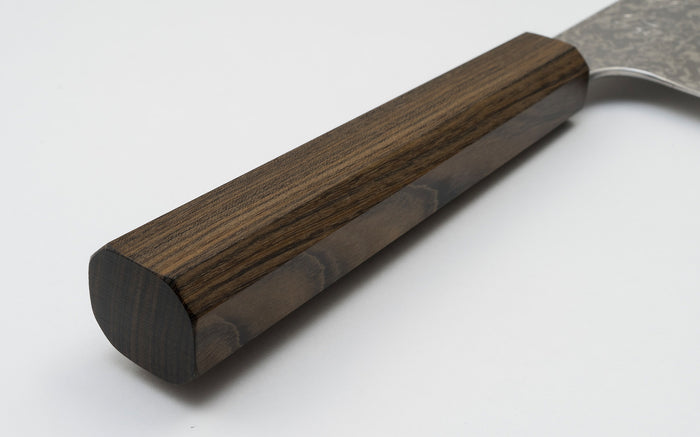Yoshimi Kato | 庫存單位:
YK-ASDM-BK18
加藤吉美 青神金太郎 超級大馬士革 KU 梨文化 180mm
售價
$6,033.00
正常價格
$7,077.00
單價
/
不可用
加藤吉美 青神金太郎 超級大馬士革 KU 梨文化 180mm 已缺貨,一旦有貨就會出貨。
無法載入取貨日期
Detailed Specifications
| Line | 加藤義實 超級青鋼黑打大馬士革 |
| Profile | 文化刀 |
| Bevel Type | 雙斜面 |
| Weight | 138 g | 4.9 oz |
| Edge Length | 173 mm | 6 13/16″ |
| Heel Height | 46 mm | 1 13/16″ |
| Width @ Spine | 2.6 mm | 7/64″ |
| Width @ Mid | 2.0 mm | 5/64″ |
| Width @ 1cm from Tip | 0.9 mm | 1/32″ |
| Steel | 青紙超級 / 青紙スーパー | 碳鋼 |
| Blade Construction | Sanami - 軟鐵大馬士革夾層 |
| Hardness (HRC) | 62 - 65 |
| Surface Finish | 黑打 |
| Handle | 八角黑查卡特木 |
| Region | 越前 |
| Best for |
|

| Pros | Cons |
|
|
|
Care Instruction
- Don't cut hard things! Japanese knives are brittle so bone hacking is a NO NO!
- Wash with neutral detergent after use, and wipe dry;
- Please don't wash knife with dishwasher, it will damage the wood handle;
- Be careful not to leave the knife close to a heat source for a long time;
- It is a lot more dangerous to cut with a blunt knife than a sharp knife!
- It is best to sharpen a Japanese knife regularly on a waterstone. Error: Steel nature unknown

